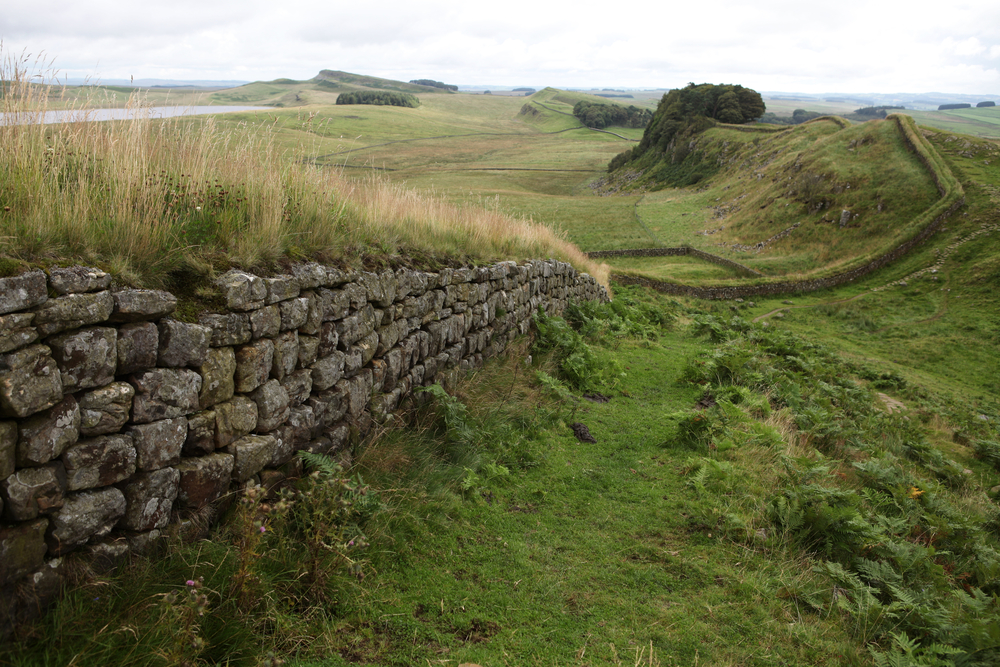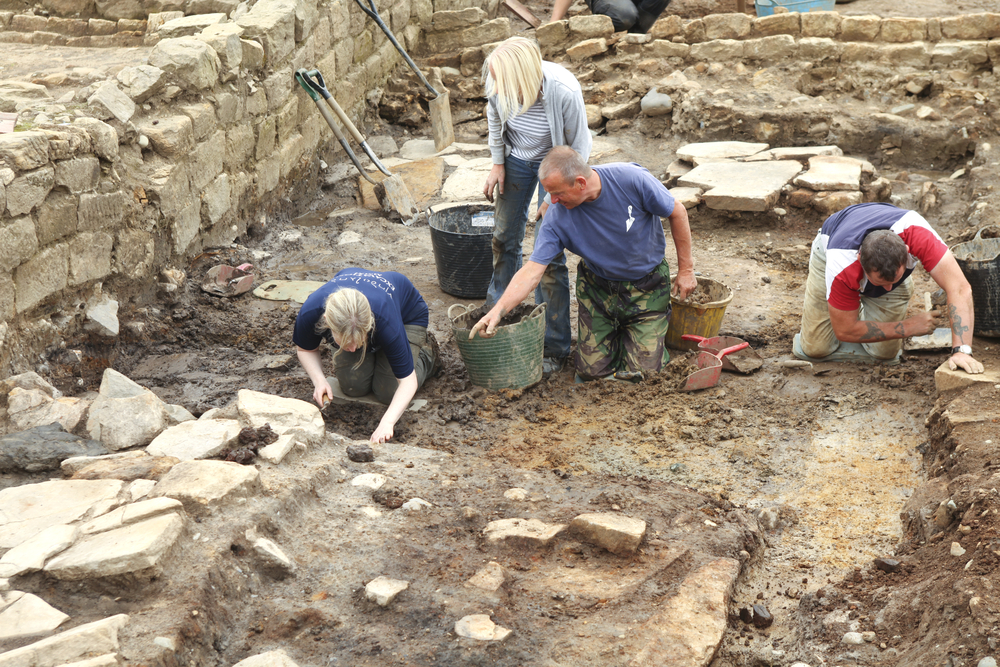Hadrian's Wall: Northern Frontier of the Roman Empire
Hadrian’s Wall, located in northern England, runs for about 74 miles (118 km) between Bowness-on-Solway in the west and Wallsend in the east. When in operation, it served as the most northerly frontier of the Roman Empire.

Construction started around A.D. 122, after a visit to Britain by Emperor Hadrian (reign A.D. 117-138), a ruler determined to consolidate the Roman Empire’s borders. England and Wales had both fallen to Roman control by A.D. 61 when the Iceni queen, Boudicca, was defeated. Scotland, however, had successfully resisted Roman attempts at conquest, a people called the “Caledonians” thwarting attempts by Roman legions to take permanent control of the Scottish lowlands.
The wall was Hadrian’s attempt to establish a defendable border between southern Britain and the unconquered north. Built using local materials by Roman soldiers from the II, VI and XX legions, the wall’s initial fortifications were finished within a few years and were manned mainly by auxiliary (non-Roman citizen) units.
The wall would have made a strong impression on the local people, to say the least.
“We have to envisage an area of Britain where there wasn’t all that much stone building, certainly no monumental masonry. So it would have been a totally alien thing,” said Professor Miranda Aldhouse-Green of Cardiff University in a BBC Timewatch documentary. “It would be like a visitation from another world and people would be gobsmacked [stunned] by it.”
Stone and turf
University of Edinburgh researcher Nic Fields notes that, when originally constructed, the eastern portion of the wall was built of stone and ran for 41 miles (65 km), ending at Newcastle upon Tyne (eventually this was expanded further east to Wallsend). It measured about 10 feet (3 meters) wide and perhaps 15 feet (4.4 meters) tall.
The western portion of the wall, on the other hand, was made of turf and extended for 29 miles (47 km), ending at Bowness-on-Solway. Its width was about 20 feet (5.9 meters). “Turf was a building material that was tried and tested and its use in the western sector might indicate a need for speed of construction,” writes Fields in his book, "Hadrian’s Wall A.D. 122-410" (Osprey Publishing, 2003).
To the north of Hadrian’s Wall was a V-shaped ditch and to the south was another line of defense called the “Vallum,” which was constructed gradually. The Vallum consisted of a ditch flanked by “large earth ramparts or mounds” writes Newcastle University researcher Rob Collins in his book, "Hadrian’s Wall and the End of Empire" (Routledge, 2012).
About every mile of the wall was equipped with a milecastle, a small gateway that could house a few soldiers. There were two turrets between each milecastle. In addition large fortresses were built about every seven miles (11 km) apart.
Collins writes in his book that these fortresses were up to nine acres in size, were shaped like a “playing-card” and had all the necessary support facilities. “Important building such as the principia (headquarters building), praetorium (commanding officer’s house), and horrea (granaries) were found in the central range, with the front and rear ranges containing barrack accommodation and other structures.”
The presence of women
At the fortress of Vindolanda, hundreds of wooden tablets with handwritten Latin writing have been unearthed, providing glimpses into the everyday lives of the soldiers stationed there. This particular fortress was in use before and during the time of Hadrian’s Wall.

The texts reveal that senior military commanders at Vindolanda did have wives, and the tablets reveal a correspondence between two women, Sulpicia Lepidina and Claudia Severa. The two were isolated by their sex and social status, and may have been lonely. “The letters between them deal with little things such as invitations to come and visit: Claudia, for example, invites Sulpicia to visit her on her birthday,” writes researcher Geraint Osborn in his book, "Hadrian’s Wall and its People" (Bristol Phoenix Press, 2006).
“I give you a warm invitation to make sure that you come to us, to make the day more enjoyable for me by your arrival...” reads part of the invitation from Claudia (translation from "Vindolanda Tablets Online," Oxford University).
The wives of lower ranking soldiers on Hadrian’s Wall fortresses had to be more discreet.
“Men of lower ranks were forbidden to marry; they should have no ties to the area, so that they could be rapidly posted elsewhere,” writes Osborn. “However, whatever the prohibitions, ordinary soldiers did contract illegal marriages, often keeping wives and kids in the vicus (civilian settlements adjacent to the fortresses).”
The wall throughout time
As Rome’s military position in Britain changed so did the wall.
After Hadrian’s death in A.D. 138, his successor Antoninus Pius (reign A.D. 138-161) adopted a radically different policy in Britain. He abandoned Hadrian’s Wall and made a concerted effort to conquer the Scottish lowlands. After having some success, he built a new line of fortifications in Scotland known as Antonine’s Wall.
Antoninus’ conquest proved only temporary and by the end of his reign, the Scottish fortifications had been abandoned and Hadrian’s Wall reoccupied.
A series of modifications were then made to the wall, including the replacement of the turf portion in favor of stone and the construction of a road called the “military way” to the south of the wall. In addition, Collins notes, the turrets appear to have been decommissioned and the gateways of the milecastles narrowed.
As time went on more changes occurred. In the fourth century, as the Roman Empire came under greater military pressure, Collins notes that the gates of the milecastles were narrowed further and some blocked off altogether.
After the collapse of the Roman Empire in the fifth century, and the beginning of the Dark Ages, the political landscape of Britain changed and the wall became “politically redundant,” Collins writes. Its fortifications were quarried for stone, some of them being used to help build England’s medieval castles, the country’s new premier fortifications.
— Owen Jarus, LiveScience Contributor
Related:
Sign up for the Live Science daily newsletter now
Get the world’s most fascinating discoveries delivered straight to your inbox.

Owen Jarus is a regular contributor to Live Science who writes about archaeology and humans' past. He has also written for The Independent (UK), The Canadian Press (CP) and The Associated Press (AP), among others. Owen has a bachelor of arts degree from the University of Toronto and a journalism degree from Ryerson University.










